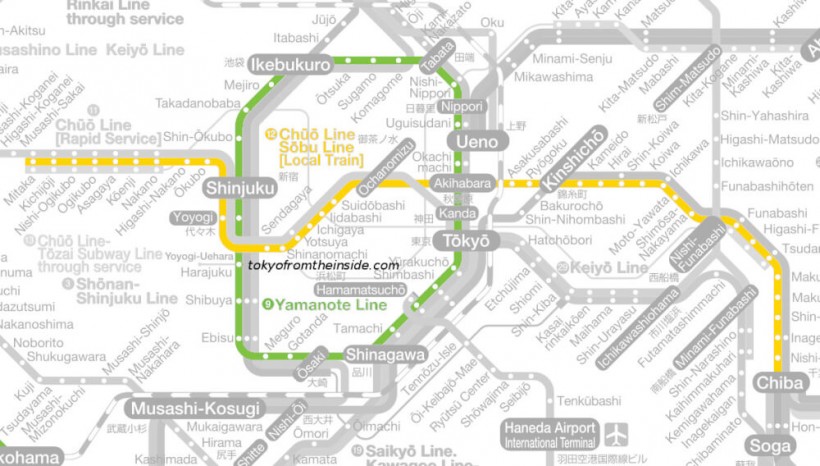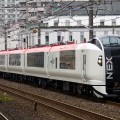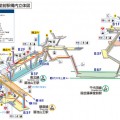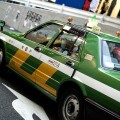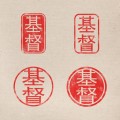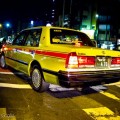6. The Major Interchanges in Tokyo
If you have a particularly bad memory, the least you could try to remember are the big interchanges. If you have no interest in planning small details such as transport, at least try to stay near one of these big stations so you are assured of transport convenience. Also, if you ever get hopelessly loss, dropping off at one of these stations to do some re-routing is also strongly advised.
| Station | Lines |
| Ueno | Tokyo Metro Ginza Line and Hibiya Line, Tōhoku Shinkansen, Yamagata Shinkansen, Akita Shinkansen, Jōetsu Shinkansen, Nagano Shinkansen, Utsunomiya Line (Tōhoku Main Line), Takasaki Line, Keihin-Tōhoku Line, Yamanote Line, Jōban Line. |
| Tokyo | Tōhoku Shinkansen, Yamagata Shinkansen, Akita Shinkansen, Jōetsu Shinkansen, Nagano Shinkansen, Tōkaidō Main Line, Keihin-Tōhoku Line, Yamanote Line, Chūō Line (Rapid), Sōbu Line (Rapid) (Ltd. Express Narita Express, Ayame, Shiosai), Yokosuka Line (including Ltd. Express Narita Express), Keiyō Line, JR Central, Tōkaidō Shinkansen (through services: Sanyō Shinkansen of JR West), Tokyo Metro Marunouchi Line |
| Shinagawa | Tōkaidō Shinkansen, Keihin-Tōhoku Line, Tōkaidō Main Line, Yamanote Line, Yokosuka Line, Keikyū Main Line |
| Shinjuku | Yamanote Line, Chūō Main Line (Limited Express), Chūō Rapid Line, Chūō-Sōbu Line, Shōnan-Shinjuku Line, Saikyō Line, Odakyu Odawara Line, Keiō Line, Keiō New Line, Tokyo Metro Marunouchi Line, Toei Shinjuku Line, Toei Ōedo Line |
| Ikebukuro | Saikyō Line, Shōnan-Shinjuku Line, Yamanote Line, Seibu Ikebukuro Line, Tōbu Tōjō Line, Tokyo Metro Marunouchi Line, Tokyo Metro Yūrakuchō Line, Tokyo Metro Fukutoshin Line |
| Iidabashi | Chūō-Sōbu Line, Tokyo Metro Tōzai Line, Tokyo Metro Yūrakuchō Line, Tokyo Metro Namboku Line, Toei Ōedo Line |
| Otemachi | Tokyo Metro Chiyoda Line, Tokyo Metro Marunouchi Line, Tokyo Metro Tōzai Line, Tokyo Metro Hanzōmon Line, Toei Mita Line |
| Nagatacho + Akasaka -mitsuke | Tokyo Metro Nanboku Line, Tokyo Metro Yurakucho Line, Tokyo Metro Hanzomon Line, Tokyo Metro Ginza Line, Tokyo Metro Marunouchi Line |
| Korakuen + Kasuga | Tokyo Metro Nanboku Line, Tokyo Metro Marunouchi Line, Toei Mita Line, Toei Oedo Line |
| Shinbashi | Tōkaidō Line, Yamanote Line, Keihin-Tōhoku Line, Yokosuka Line, Tokyo Metro Ginza Line, Toei Asakusa Line, Yurikamome Line |
*Note that many of these stations are also connected underground to several other subway stations
7. Help With Planning Your Route
Google Maps and Hyperdia are two commonly-used routing services that give train timings and also cover through services. You can also download a detailed railway map here (PDF file) and a detailed subway map here (PDF file).
Edit: Gonazar from Reddit (r/JapanTravel) suggested this useful map covering both railway and subway networks in Tokyo.
8. Train Passes
Here, we will look at train passes for travel mainly within Tokyo. Hence, we will not be discussing about the JR Rail Passes.
The options are quite straightforward. You can get one day passes for specific companies (Tokyo Metro, Toei or JR) or a combination pass that covers 2 or 3 of these companies. For those who are planning to spend lots of time in Odaiba, there is also a 1-day pass for the Yurikamome Line.
| Pass | Description | Price in yen (children price) | Where to buy |
| Tokyo Free Ticket (Furii Kippu) | Covers 1 day of travel on JR trains (excluding express), Toei buses/subways and Tokyo Metro trains | 1580 (790) | JR, Toei and major Tokyo Metro stations |
| Tokyo Metropolitan District Pass (Tokunai Pass) | Covers 1 day of travel on JR trains (excluding express) within the 23 wards of Tokyo | 730 (360) | JR stations |
| Toei One-Day Economy Pass | Covers 1 day of travel on Toei buses and subways | 700 (350) | Toei stations |
| Tokyo Metro One-Day Open Ticket | Covers 1 day of travel on Tokyo Metro subway trains | 710 (360) | Tokyo Metro stations |
| Toei and Tokyo Metro One-Day Pass | Covers 1 day of travel on Toei buses / subways and Tokyo Metro subway trains | 1000 (500) | Toei and Tokyo Metro stations |
| Yurikamome One-Day Open Ticket | Covers 1 day of travel on the Yurikamome Line which services Odaiba | 800 (400) | Yurikamome Line stations |
9. Using IC cards
IC cards are basically integrated circuit cards which allows one to enter gantries in train stations simply by tapping the card against a receiver. They work as prepaid cards (rechargeable) and must have sufficient stored value in order to be used. One of the clear advantages of using an IC card is that you don’t have to keep buying tickets every time you want to take a train.
There are a variety of such smart cards used in Japan but the two main ones used in Tokyo are Suica and PASMO. One common question first time visitors to Tokyo often ask is “which card should I get?”. The answer to that question is that it doesn’t really matter. Since 2013, the PASMO, Suica, Icoca, Toica, Kitaca, nimoca, Sugoca, Pitapa, Hayakaken and manaca cards have been made compatible with each other across Japan.
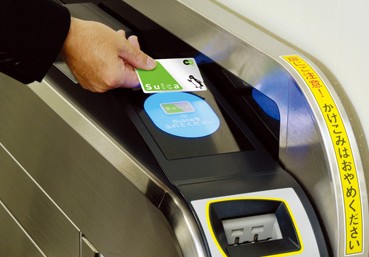
That’s all I can think of right now. If you have any further questions, feel free to drop a comment.
Credits for corrections/contributions: Titibu, Gonazar
